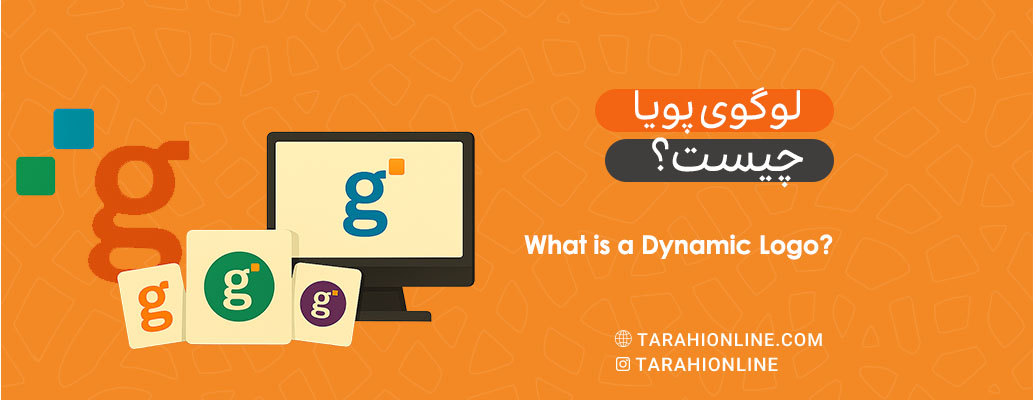
In the modern world of branding, logos are no longer just static and fixed symbols. With advancements in technology and evolving audience needs, the concept of a dynamic logo has emerged as an innovative approach to logo design. Dynamic logos allow brands to be more flexible, interactive, and adaptable to various contexts. But what exactly is a dynamic logo, and why has it become so popular in the digital age? In this article, we explore the definition of a dynamic logo, its characteristics, advantages, challenges, and successful examples.
What is a Dynamic Logo?
A dynamic logo, sometimes referred to as an adaptive or flexible logo, is a logo that can change based on context, audience, or platform while still retaining the core identity of the brand. Unlike traditional logos, which are typically fixed and unchanging, dynamic logos consist of elements that can vary in color, shape, typography, or even animation. These changes are designed to ensure the brand remains recognizable.
Dynamic logos usually include a core visual framework (such as a fixed symbol or typography) and variable elements that adapt based on specific needs. This flexibility allows brands to maintain an effective presence across diverse environments, from digital media to print advertising.
Key Characteristics of a Dynamic Logo
Dynamic logos have distinct features that set them apart from traditional logos:
- Flexibility: Dynamic logos can change in size, color, shape, or style to suit different platforms (e.g., social media, websites, or billboards).
- Preservation of Brand Identity: Despite variations, dynamic logos retain key brand elements to avoid confusing audiences.
- Interactivity: Many dynamic logos incorporate animation or interactive elements that enhance engagement in digital environments.
- Audience Adaptation: Dynamic logos can adapt to different audiences or cultures, such as by using localized colors or symbols.
- Trend Responsiveness: These logos allow brands to stay aligned with design trends or seasonal changes.
Types of Dynamic Logos
Dynamic logos can be designed in various ways. Some common types include:
- Variable Logos: These logos have fixed elements, but details (such as color or patterns) change. A well-known example is Google’s logo, which transforms into Google Doodles for special occasions.
- Responsive Logos: These logos are designed to adapt to different screen sizes or media. For example, a logo may appear detailed on a website but simplified on a mobile app.
- Interactive Logos: These logos change in digital environments through animation or in response to user actions (e.g., clicks or scrolling).
- Contextual Logos: These logos adapt based on the audience or situation, such as logos tailored for local markets or specific campaigns.
Advantages of Dynamic Logos
Using dynamic logos offers several benefits for brands:
1. Flexibility Across Platforms
Dynamic logos enable brands to maintain a cohesive yet tailored presence across diverse media, from social media to environmental advertising.
2. Capturing Audience Attention
Visual variations and animations in dynamic logos can attract attention and create memorable experiences for audiences.
3. Deeper Audience Connection
By adapting logos to cultures, events, or specific audiences, brands can build stronger emotional connections with their customers.
4. Alignment with Trends
Dynamic logos allow brands to stay current with market changes or design trends without requiring a complete logo redesign.
5. Enhanced Digital Identity
In a digital world where animation and interactivity are crucial, dynamic logos help brands maintain a modern and engaging presence.
Challenges of Dynamic Logos
Despite their advantages, designing and implementing dynamic logos comes with challenges:
1. Design Complexity
Creating a dynamic logo that is both flexible and consistent with brand identity requires careful planning and high creativity.
2. Risk of Audience Confusion
Excessive changes to a logo may make it difficult for audiences to recognize the brand.
3. Cost and Time
Designing and implementing dynamic logos, especially with animations or digital adaptability, can be time-consuming and expensive.
4. Need for Consistency Management
Brands must ensure that all logo variations, despite changes, still align with a unified visual identity.
Successful Examples of Dynamic Logos
Several well-known brands have successfully implemented dynamic logos:
- Google: Google’s logo transforms into Google Doodles for special occasions, incorporating animations or imagery related to events, captivating audiences.
- MTV: MTV’s logo is a classic example of a dynamic logo, using varying patterns, colors, and imagery.
- Spotify: Spotify employs dynamic logos in its advertising campaigns, adapting them to different music genres or artists.
- Nike: Nike occasionally modifies its logo with subtle changes in color or shape for specific campaigns to convey targeted messages.
How to Design a Dynamic Logo?
To create a successful dynamic logo, consider the following steps:
- Define Brand Identity: Start by identifying the core elements of the brand’s identity (e.g., values, audience, and message).
- Design a Core Framework: Create a base logo with fixed elements (e.g., a symbol or typography) that variations will build upon.
- Develop Variable Elements: Design colors, patterns, or animations that can change without compromising brand identity.
- Test Across Platforms: Test the logo in various media (digital, print, small, and large formats) to ensure its adaptability.
- Document Guidelines: Create a brand guideline that outlines the rules for using the dynamic logo.
A dynamic logo is a powerful tool in modern branding, enabling brands to be flexible, interactive, and relevant to their audiences. By maintaining core brand identity, these logos allow for effective presence in the digital world and across diverse media. However, designing a dynamic logo requires precision, creativity, and careful management to ensure visual consistency and avoid audience confusion.
Ultimately, dynamic logos represent innovation in design and help brands remain competitive and relevant in a rapidly changing world. With the growing importance of digital experiences, dynamic logos are likely to play an even more significant role in branding in the future.
The Tarahi Online graphic and logo design team, with over ten years of experience in professional graphic and logo design, is ready to assist you and bring your ideas to life. Contact us to submit your request or place an order.
